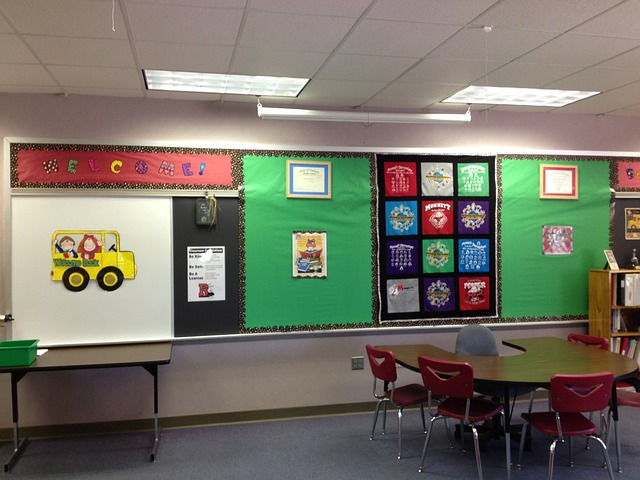 Image by jarmoluk from Pixabay.
Image by jarmoluk from Pixabay.
A typical elementary math classroom is comprised of 20+ students that have a staggeringly diverse group of needs. No two students come with the same skill set and no two students learn at the same rate or in the same way. Teachers are left to figure out not only where each student sits on their grade level continuum, but how to move each child forward along that line.
It’s a daunting task.
Adaptive learning platforms give teachers the opportunity to give their students the targeted instruction and assessment they need. They are, increasingly, an integral part of the tech integrated classroom.
Adaptive learning platforms are software-based teaching and learning tools that respond to the performance of the individual using it. As a student uses the system, it captures detailed data about the student’s performance that inform future interactions with the tool.
Teachers have been instituting adaptive learning in their classrooms for decades. Small group instruction, one-on-one coaching, and scaffolding are all examples of teachers collecting data on student performance and using that information to tailor instruction at the individual or small group level. Small group instruction can be highly effective and successful but even small groups fall short of meeting every learner’s unique needs.
The problem with individualized teaching? Pulling that off in a classroom environment is improbable at best.
 Image by shannonmatthew from Pixabay.
Image by shannonmatthew from Pixabay.
Assessing and analyzing at the individual level is painstaking and extremely time consuming. Teachers simply do not have the bandwidth to cater each lesson and assessment to each student. Working around the clock would be insufficient. Classroom teachers are nothing shy of dedicated and determined heroes but they are not superhuman.
If they were and could somehow manage the demands of such a massive amount of data, delivering individualized lessons and assessments in a typical elementary classroom would open a large can of classroom management worms. Speaking on behalf of the teachers on the front lines, thanks, but no thanks.
Adaptive learning technology takes what teachers have been doing to the best of their human abilities and throws artificial intelligence (AI) into the equation. AI aggregates data at an insanely high resolution and caters tasks to the learners that meet them right where they are and then incrementally moves them towards higher level work. AI isn’t limited by human capacity. In this way, it is superhuman.
Adaptive learning technology is more successful in some subject areas than others. Classes in which learning comes from discussions, such as philosophy or ethics, do not lend themselves easily to adaptive learning technology. These are better suited for face-to-face interaction as skill mastery is not a requisite to understanding.
Math, on the other hand, is an ideal subject in which to integrate adaptive learning platforms into the classroom. Chief Data Scientist at the Chinese AI company Yixue, Dan Bindman, says that math is a natural fit for adaptive learning platforms. Mathematics has a structure to it and learning follows along a progression. A student must understand counting before addition, addition before multiplication, grouping before division, and so on.
The stair-step nature of mathematics makes it easier for the adaptive learning platform to go through the process of “diagnosis” as Bindman calls it. The system efficiently identifies exactly what the student knows at a very granular level. This is possible due to how the content is organized within the platform.
The content is broken into units which are then further broken down into thousands of “items” that address the skills in the unit. The “items” are groups of similar questions that target a specific problem solving skill.
For example, in an algebraic thinking unit a student may be asked to solve X + 10 = 20. To gain mastery of this type of problem, the adaptive learning system will present nearly limitless problems that address that skill with a variety of approaches.
Bindman explains that what makes adaptive learning technology so effective is that the platform figures out not only what the student has mastered but what they are ready to progress to based on their performance on the various items presented.
 Image by ernestoeslava from Pixabay.
Image by ernestoeslava from Pixabay.
Elsye Toth is an experienced 2nd grade teacher at National Blue Ribbon School, Prairie Vista Elementary in Granger, IN. She uses adaptive learning technology in her classroom and says, “Adaptive learning programs are geared towards challenging each student in a way that will help them improve. Some of my students speak English as a second language while others are reading at a middle-school grade level. To best support each student, they need instruction that will adapt to their strengths and weaknesses.”
Further, “By using an adaptive program with fidelity, students are able to get the targeted practice they need in order to master a concept they struggle with or be challenged to keep them engaged and motivated- all at the same time. As a teacher, I can track their progress and supplement with activities in the classroom to address common problems and trends that I observe need to be retaught. When students’ performances show improvement, I know they are learning and growing, which means that I am doing what I love to do…help children learn.”
Adaptive learning is a winning scenario for all stakeholders: student, parent, teacher, and administrators.
Having access to instruction and practice that is tailored to individual learning needs is clearly advantageous to the student. There is no one-size-all approach when it comes to education and adaptive learning platforms allow students to learn on their level, at their own pace.
Parents crave information about their child’s education. They recognize that teachers do their best to share information and make themselves available for any questions that parents have about a student’s progress. Despite best efforts, parents sometimes feel like they are operating in a vacuum. They are not there seeing the good work that goes on day in and day out in the classroom. They don’t have the advantage of presence. Parents would be thrilled to receive the hard data reporting that is readily available through most adaptive learning platforms.
Teachers build their lessons around state standards, assess student understanding of those standards, and then revisit, review, and expand based on the results of those assessments. Adaptive learning platforms give teachers individualized reporting that can show where each student started and how they have grown. This data can inform decisions about student groupings, future instruction, and lesson design. Best of all, it is easy and quick to gather.
The reporting tools available through adaptive learning platforms provide administrators with a wealth of information about the students they serve and the teachers they employ. Progress can be tracked on a predefined time periods, such as per grading period or semester, and administrators can use this data to identify patterns and inform placement and personnel decisions.
When it comes to meeting the individual needs of students the struggle is certainly real. Teachers need tools that make this near impossible pursuit absolutely possible. Adaptive learning platforms in the early math classroom help students achieve greater, learn deeper, and progress intelligently up the stair steps of mathematical learning.